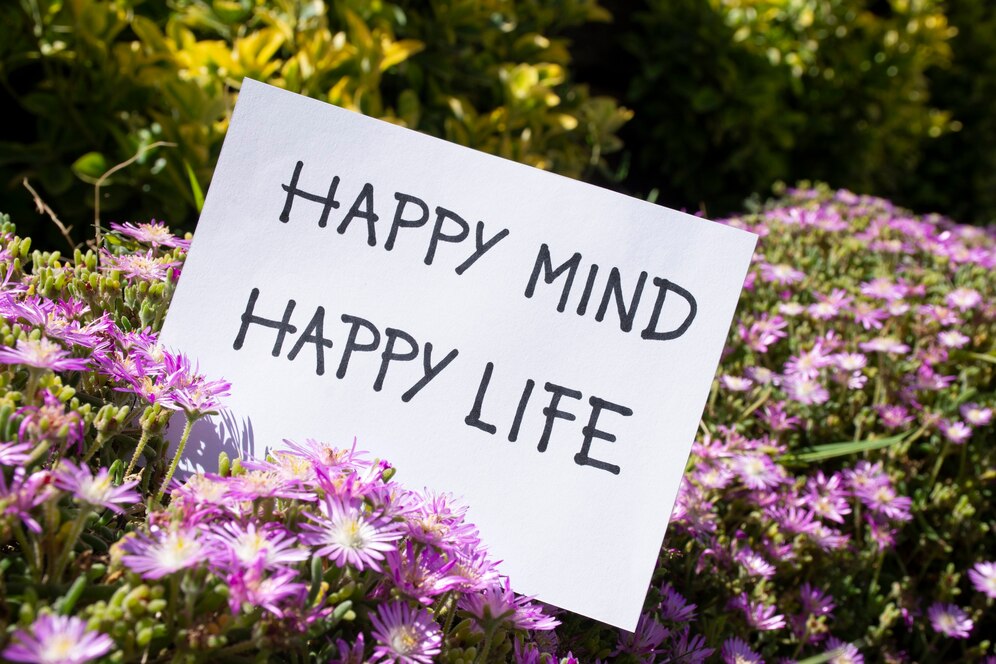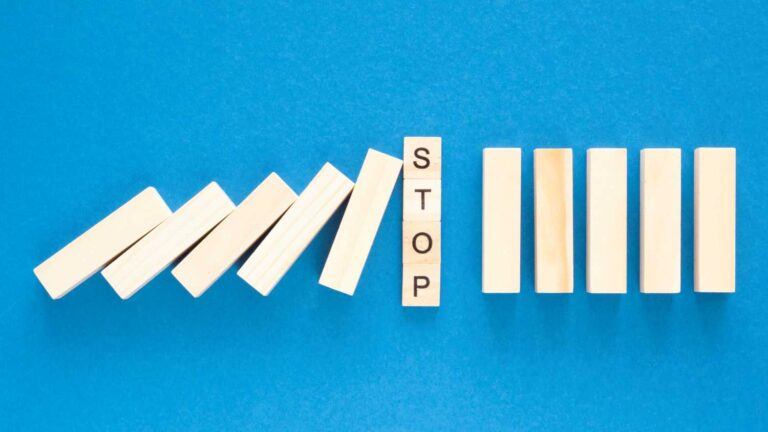Best gratitude exercises to boost your mood with journal prompts
Looking for gratitude exercises that actually work? You know the ones – that go beyond writing “I’m grateful for my family” and actually shift how you feel about your life?
Here’s what’s really happening when you feel like nothing goes your way: Your brain has been trained to scan for problems. It’s not your fault – we’re literally wired to notice threats and dangers. But this ancient survival mechanism is now keeping you stuck in a cycle of focusing on what’s wrong instead of what’s right.
Every morning, your mind immediately jumps to your problems. You scroll social media and compare your behind-the-scenes mess to everyone else’s highlight reel. You replay that one criticism while ignoring ten compliments. You focus on the single thing that went wrong while fifty things went right.
The result? You feel ungrateful, stuck, and like life is harder for you than everyone else.
But here’s the truth: You’re not having a worse life than other people. You’re just experiencing a completely normal life through a lens that’s been programmed to focus on the negative.
What gratitude really is (and why it’s not toxic positivity)
Gratitude exercises aren’t about pretending everything is perfect or forcing fake positivity. Gratitude is about training your brain to see the full picture instead of just the negative highlights.
Your brain is naturally wired to notice threats and problems – it’s called the negativity bias. In prehistoric times, this kept you alive. Today, it’s keeping you stuck because you’re constantly scanning for what’s wrong instead of acknowledging what’s actually working in your life.
Here’s what typically happens: You wake up and your mind immediately goes to your problems. You scroll social media and automatically compare your behind-the-scenes to everyone else’s highlight reel. You focus on the one piece of criticism you received instead of the ten compliments. You replay everything that went wrong instead of acknowledging what went right.
This isn’t your fault – it’s just how your brain is programmed. But you can reprogram it.
Why gratitude feels so hard (and the mindset shifts that make it easier)
Most people think they can’t practice gratitude exercises because they don’t have enough good things in their life. That’s backwards.
You don’t see good things in your life because you don’t practice gratitude.
Your brain finds what you tell it to look for. If you’re constantly focused on problems, your brain will serve up more problems. If you start focusing on things to be grateful for, your brain will start noticing more things to appreciate.
But here’s why gratitude exercises can feel challenging:
Complaining feels familiar and safe. When life is difficult, focusing on problems can feel like the only honest response. Plus, shared struggles often bring people together – it’s easier to bond over what’s going wrong than what’s going right.
You might worry that gratitude means settling. There’s a fear that appreciating what you have means you’ll stop striving for better. But gratitude actually gives you the emotional foundation to pursue goals from a place of abundance rather than desperation.
You’re waiting for the “right” moment. It’s easy to think you’ll be grateful when you get the job, the relationship, the house, the body. But appreciation doesn’t come after success – it often creates the mindset that leads to it.
It requires taking ownership of your experience. Practicing gratitude means acknowledging that while you can’t control what happens to you, you can influence how you respond to it. This can feel overwhelming if you’re used to external circumstances determining how you feel.
The good news: Once you understand these patterns, you can start shifting them.

The life-changing benefits of practicing gratitude exercises
Gratitude exercises aren’t just feel-good activities – they create measurable changes in your brain and life. Here’s what happens when you practice consistently:
Better mental health: Regular gratitude exercises reduce symptoms of depression and anxiety while encouraging a positive mindset. They help shift your focus from what’s lacking to what’s abundant in your life.
Improved relationships: Showing appreciation for people deepens your connections. When you express gratitude, others feel valued and respected, which strengthens your bonds.
Better sleep quality: Taking time to reflect on what you’re grateful for before bed calms your mind and helps you sleep more peacefully.
Increased resilience: Recognizing what you’re grateful for helps you bounce back from tough times. When you can see the good even during challenges, you recover more quickly from stress and setbacks.
Better physical health: Grateful people tend to have lower blood pressure, stronger immune systems, and fewer stress-related illnesses.
Boosted self-esteem: Focusing on what you appreciate in your life improves your self-worth. When you recognize good things happening around and within you, you naturally feel better about yourself.
Reduced negative emotions: While you’re feeling grateful, you can’t simultaneously feel sad, angry, or bitter. Gratitude crowds out toxic emotions like envy and resentment.
Encourages positive behavior: Being thankful motivates you to act more generously and compassionately. When you recognize goodness in your life, you’re more likely to share that positivity with others.
Enhanced optimism: Focusing on good things naturally makes you more hopeful about the future. This optimism improves motivation and overall well-being.
Improved overall happiness: When you train your attention on what you’re thankful for, you shift away from focusing on what’s lacking. This creates a more positive outlook and greater life satisfaction.
The science backs this up: People who practice gratitude exercises regularly experience lower stress, better relationships, improved immune function, and significantly higher life satisfaction.

12 powerful gratitude exercises that will transform your perspective
Here are gratitude exercises that go beyond surface-level appreciation and create real change:
1. Daily gratitude journaling (done right)
Most people do gratitude journaling wrong by writing generic lists. Here’s how to make it transformational:
Choose your timing: Pick a consistent time each day – morning to set a positive tone, or evening to reflect on the day’s good moments. Consistency matters more than perfection.
Be specific: Instead of “I’m grateful for my family,” write “I’m grateful my daughter hugged me this morning because it reminded me how much love we share.”
Explain the why: Don’t just list things – explain why they matter to you and how they make you feel.
Try these approaches:
- Three good things: Write about three positive things that happened, no matter how small
- People you appreciate: Focus on someone who made a difference in your day
- Personal achievements: Acknowledge something you accomplished, however minor
- Nature and surroundings: Notice beauty in your environment
- Acts of kindness: Appreciate kindness given or received
Pro tip: Keep your gratitude journal on your phone so you can add to it throughout the day and reread entries when you need a mood boost. Need more inspiration for your gratitude practice? These 100 gratitude journal questions will help you dig deeper and never run out of meaningful prompts to explore.
2. The specificity practice
Stop writing generic gratitude lists. Generic gratitude doesn’t create emotional connection.
Instead of: “I’m grateful for my friend.” Write: “I’m grateful Sarah texted to check on me after my presentation because it showed she was thinking about me and genuinely cares about my success.”
Why this works: Specificity creates genuine feeling. When you explain exactly why something matters, you connect emotionally instead of just intellectually acknowledging it.

3. Gratitude letters you actually send
Writing thank-you notes feels nice. Actually sending them creates transformation.
How to do it: Once a week, write a specific, heartfelt letter to someone who has impacted your life. Tell them exactly what they did, how it affected you, and why you’re grateful. Then send it.
Don’t write: “Thanks for being a good friend.” Write: “Thank you for listening to me process my work stress for two hours last week without trying to fix everything or judge my choices. Having someone who lets me think out loud means everything to me.”
Why this works: This deepens relationships while forcing you to recognize the support that already exists in your life. Plus, you’ll make someone’s day incredible.
4. Gratitude walks with mindfulness
Taking a gratitude walk combines physical movement with appreciation practice. As you walk, focus on things you’re thankful for while engaging your senses.
Mindfulness techniques to enhance your walk:
Deep breathing: When your mind wanders, take slow, deep breaths. Inhale for 5 seconds, exhale for 6 seconds. This centers your thoughts and brings you into the present moment.
Sensory observation: Notice what you see, hear, smell, and feel. Is there a tree with beautiful leaves? Can you hear birds singing? Feel the ground beneath your feet and appreciate your body’s ability to move.
Five senses check: Engage all your senses deliberately. What colors catch your eye? What sounds do you hear? What scents are in the air? This grounds you in the moment and creates mindful appreciation.
Gratitude focus: As you walk, mentally note things you’re grateful for – the ability to move your body, the fresh air, the safety of your neighborhood, the time you have for yourself.

5. Create a gratitude jar
IA gratitude jar creates a visual reminder of good things in your life. Write appreciative thoughts on slips of paper and collect them in a decorated jar.
How to make it meaningful:
- Decorate your jar with ribbons, stickers, paint, or fabric to make it personal and inviting.
- Place it somewhere visible so you remember to use it daily.
- Write one thing you’re grateful for each day on a small piece of paper.
- When you need a mood boost, pull out a few notes and read them.
What to write about:
- Small daily pleasures,
- People who made you smile,
- Personal accomplishments,
- Beautiful moments you witnessed,
- Acts of kindness you experienced…
Make it a family activity: Have everyone in your household contribute to a shared gratitude jar. Read entries together weekly to spread positivity.
6. Daily gratitude affirmations
Incorporating gratitude exercises into affirmations creates a powerful mindset shift. These are positive statements you repeat to reinforce appreciation.
Examples of gratitude affirmations:
- “I am grateful for all the love and support I receive every day.”
- “I appreciate the small moments of joy that appear in my life.”
- “I am thankful for my health and my body’s ability to heal and move.”
- “I am grateful for the abundance that surrounds me.”
- “I appreciate my growth and learning opportunities.”
How to practice:
- Repeat affirmations each morning when you wake up.
- Write them in your journal.
- Say them aloud when you can.
- Choose affirmations that feel authentic to your experience.
Make them personal: Create affirmations based on your specific life circumstances and what you want to appreciate more.

7. Gratitude visualization
Visualizing gratitude helps you see and feel what you’re thankful for more vividly, creating stronger emotional connections.
Guided visualization process:
Find quiet space: Choose a comfortable, quiet place where you won’t be disturbed. Sit or lie down, close your eyes, and take several deep breaths.
Create a calm scene: Picture a peaceful place that makes you happy – a beach, forest, or cozy room. This becomes your mental canvas for gratitude.
Visualize your blessings: Imagine different things you’re grateful for appearing in this scene. See your family, friends, achievements, or simple joys like sunshine or favorite meals. Make the images vivid and feel the warmth they bring.
Immerse yourself: As each blessing appears, feel genuine gratitude. Imagine yourself smiling, your heart filling with warmth, and stress melting away.
Reflect and affirm: After spending time in this visualization, reflect on how grateful you feel. Silently affirm: “I am grateful for all the blessings in my life.”
8. The 10-finger gratitude exercise
This simple gratitude exercise can be done anywhere and only takes a few minutes.
How to practice:
- Find a quiet spot and take a few deep breaths.
- Extend your hands with fingers spread.
- Starting with your thumb, think of something you’re grateful for.
- Move to each finger, identifying a different thing you appreciate.
- Try to reach all ten fingers, digging deeper as you go.
- Finish with another deep breath and reflection.
Why it works: This exercise forces you to find ten specific things to appreciate, training your brain to notice abundance even when you think there’s nothing good happening.
9. The complaint flip
Every time you catch yourself complaining, immediately find something related to appreciate.
Examples:
- Stuck in traffic → Grateful for having a car and the freedom to travel.
- Stressful workday → Grateful for having a job that challenges you and pays your bills.
- Bad weather → Grateful for having shelter and appropriate clothing.
- Long lines → Grateful for having things to buy and places to go.
Why this works: This interrupts automatic negative thinking patterns and trains your brain to look for the positive angle in any situation.

10. The contrast gratitude practice
Think about something difficult from your past that you’re now grateful happened.
Examples:
- The job loss that led to a better opportunity.
- The relationship that ended and taught you what you actually want.
- The health scare that made you prioritize what truly matters.
- The failure that taught you resilience.
Why this works: This helps you see current challenges as potential future gifts instead of just problems to endure.
11. Micro-moment appreciation
Instead of only practicing gratitude during dedicated time, notice small positive moments throughout the day.
Examples:
- The taste of your morning coffee.
- The feeling of clean sheets against your skin.
- A stranger holding the door open.
- Your heart beating without you having to think about it.
- The warmth of sunlight on your face.
- A text from a friend checking in.
Why this works: This trains your brain to notice positive experiences in real-time instead of only reflecting on them later.
12. Gratitude photo practice
Take one photo daily of something you’re grateful for, but spend 30 seconds really looking at it and feeling appreciation.
Why this works: Looking for photo-worthy moments trains your eye to notice beauty and positive experiences. The pause creates actual gratitude instead of just intellectual recognition.

Gratitude challenges to make it fun and consistent
Gratitude exercises become more engaging when you turn them into challenges:
30-day gratitude photo challenge
Take a photo each day of something you’re grateful for. Share on social media or keep in a private album. By the end, you’ll have 30 visual reminders of good things in your life.
Gratitude journal challenge
Write down 5 things you’re grateful for each day for 30 days. That’s 150 gratitude entries by the end of the month – perfect for reviewing when you need perspective.
5-day intensive gratitude challenge
- Day 1: Write a thank-you note to someone who positively impacted your life.
- Day 2: Pay attention to small acts of kindness around you and acknowledge them.
- Day 3: Reflect on a happy memory and write about why it was special.
- Day 4: Share something you’re grateful for with a friend or family member.
- Day 5: Spend time in nature and appreciate its beauty.
Random acts of kindness challenge
For one week, commit to doing at least one kind act daily. Notice how these acts contribute to your sense of gratitude and connection.
Deep gratitude journal prompts that create lasting change
Move beyond surface-level lists with these prompts:
For relationships:
- Who made you feel truly understood this week, and how did they do it?
- What quality do you most admire in someone close to you, and why does it matter to you?
- When did someone recently go out of their way for you in a way that surprised you?
- What’s the kindest thing someone has done for you recently that you haven’t acknowledged?
- How has a difficult relationship taught you something valuable about yourself?
For personal growth:
- What mistake are you grateful you made because of what it taught you?
- What strength did you discover in yourself this year that you didn’t know you had?
- What challenge forced you to grow in a way you’re now thankful for?
- Name 10 things you like about yourself and why
- What skill or talent are you grateful for having, and how has it served you?
For everyday moments:
- What small pleasure did you enjoy today that you usually rush past?
- What part of your routine runs so smoothly you never think to appreciate it?
- What technology or convenience makes your life easier that you take for granted?
- Describe something beautiful you saw today
- What’s your favorite thing about where you live right now?
For perspective:
- What worry from last year turned out much better than you expected?
- What’s something difficult you’re experiencing that’s also teaching you something valuable?
- How has a past struggle prepared you for current challenges?
- What painful experience has helped you grow, and what did it teach you?
- What’s something you wished for years ago that you have today?
For the future:
- What opportunity are you grateful is coming up in your life?
- What goal are you grateful you have the chance to work toward?
- What dream are you grateful is still possible for you?
- What are you excited about that’s happening in the next month?
- How do you want to grow in the coming year, and why does that matter to you?

Common excuses that keep you stuck (and the truth behind them)
Let’s address the resistance that stops people from practicing gratitude exercises:
“I don’t have anything to be grateful for.” You’re reading this, which means you’re literate, have access to technology, and have time for personal growth. You have more advantages than billions of people throughout history. The issue isn’t lack of good things – it’s that you’ve trained yourself not to notice them.
“Gratitude feels fake when I’m going through hard times.” Nobody’s asking you to be grateful for the hard times themselves. Be grateful for your strength to handle them, for the people supporting you, for the growth that’s happening. Problems and blessings can coexist.
“I’ll practice gratitude when my life gets better.” This is backwards thinking. Gratitude doesn’t come after your life improves – it’s often what creates the improvement. People who practice gratitude exercises notice opportunities, build stronger relationships, and approach challenges with better energy.
“It’s just toxic positivity.” Gratitude exercises aren’t about pretending problems don’t exist. They’re about training yourself to see the full picture instead of just the negative parts. You can acknowledge difficulties while also recognizing what’s working.
“I don’t have time for gratitude practices.” Most gratitude exercises take 2-5 minutes. You have time to scroll social media, but not to appreciate your life? The time investment is minimal compared to the massive impact on your mental state.
What gratitude exercises will and won’t do for you
Let’s be realistic about expectations:
Gratitude exercises WILL:
- Train your brain to notice positive experiences automatically.
- Improve your mood and overall life satisfaction significantly.
- Help you appreciate what you already have instead of constantly wanting more.
- Build resilience during challenging times.
- Strengthen your relationships through increased appreciation.
- Reduce stress, anxiety, and negative rumination.
- Improve your sleep quality and physical health.
- Boost your self-esteem and confidence.
- Create more optimism about your future.
Gratitude exercises WON’T:
- Solve all your problems or make difficulties disappear.
- Work if you only practice when you feel like it.
- Replace the need to take action on real issues.
- Make you complacent about areas that need improvement.
- Fix systemic problems or injustices.
- Work overnight – they require consistent practice.
Start appreciating what you already have
You have two options: Keep focusing on everything that’s wrong and stay trapped in negativity, or train your brain to notice what’s right and create a life you actually enjoy living.
Here’s the reality: Your life probably isn’t as terrible as it feels. You’ve just become so skilled at noticing problems that you’ve forgotten how to see the good things happening alongside them.
Every day you spend focused only on what you lack is a day you miss appreciating what you have. Every moment spent dwelling on what’s wrong is a moment you could spend recognizing what’s right.
The choice is yours: Continue with the mental habits that keep you feeling ungrateful and stuck, or start practicing gratitude exercises that will shift your entire perspective.
Gratitude exercises aren’t about pretending everything is perfect. They’re about training yourself to see the complete picture instead of just the negative highlights.
The transformation starts the moment you begin. Your future self is counting on you to make that choice today.







